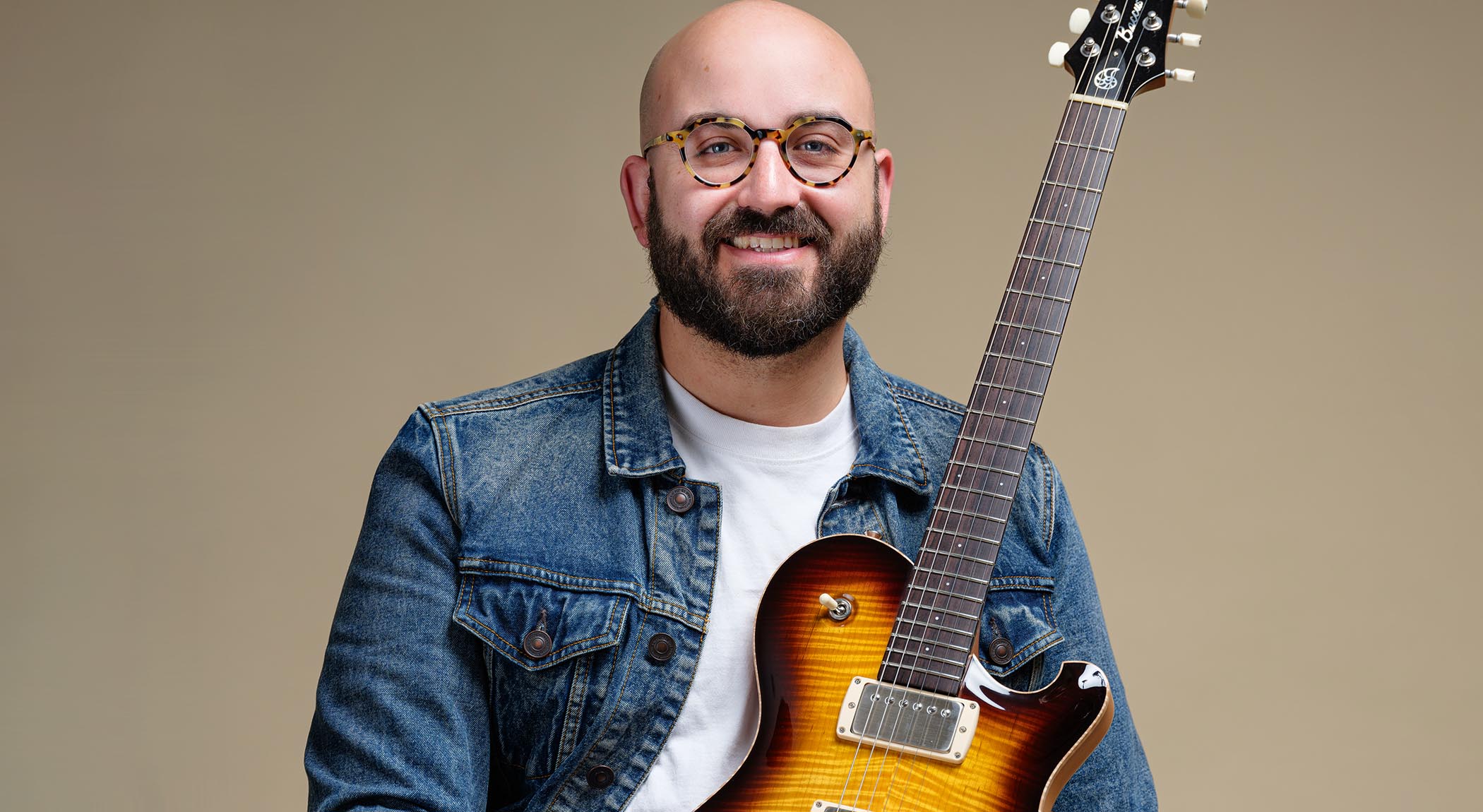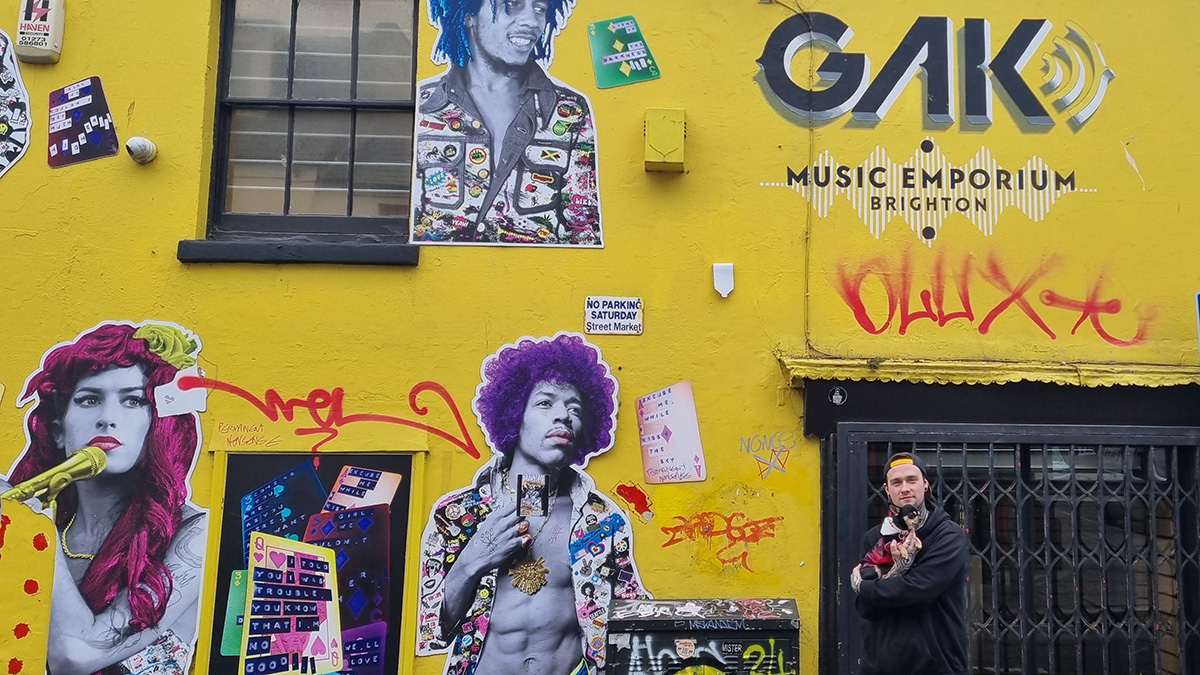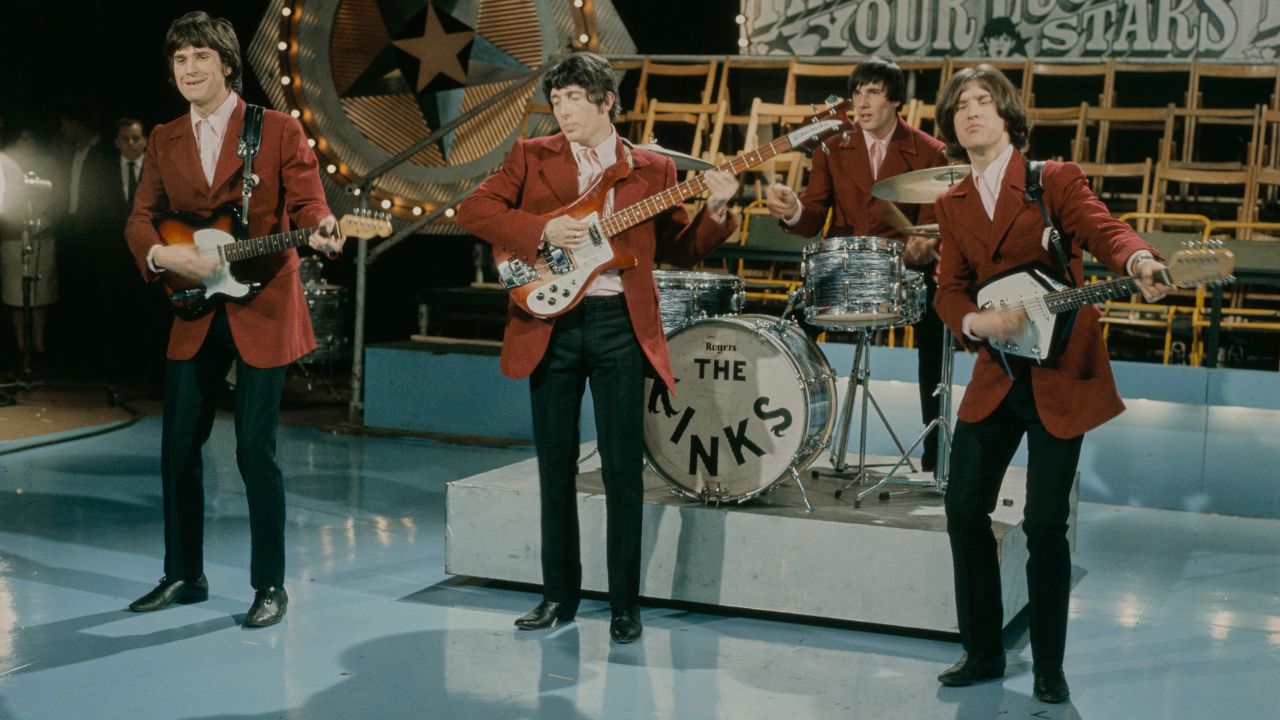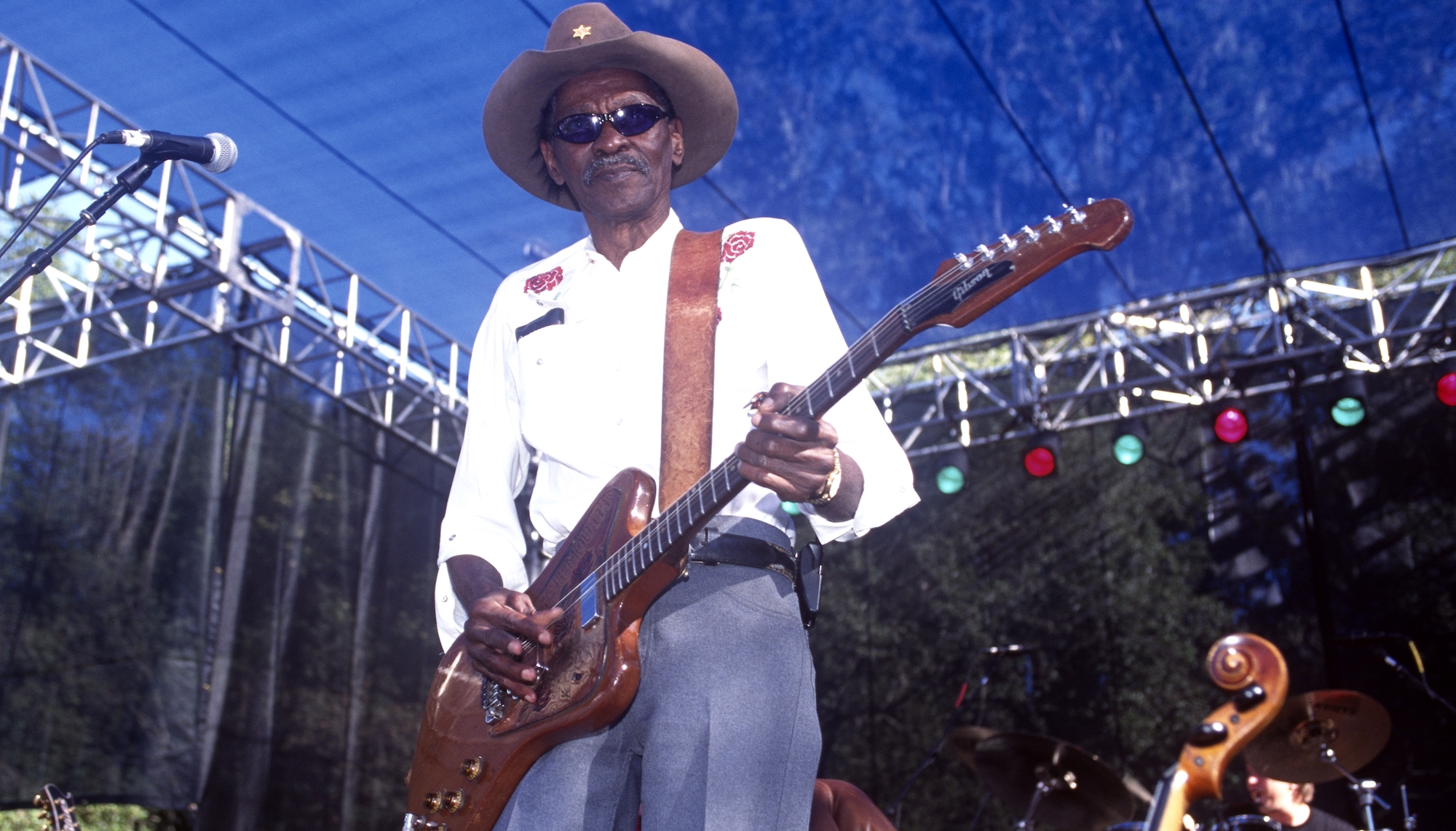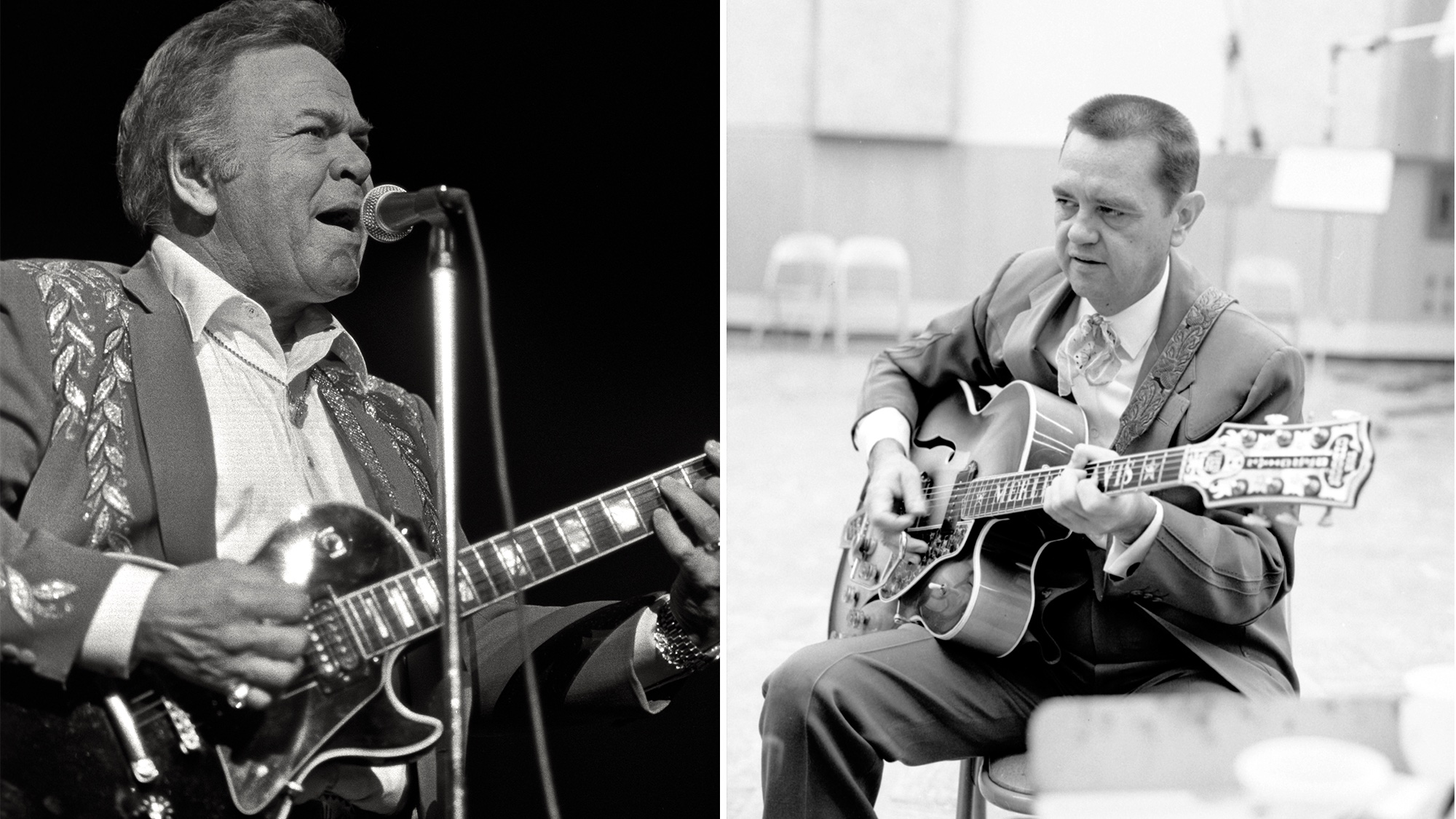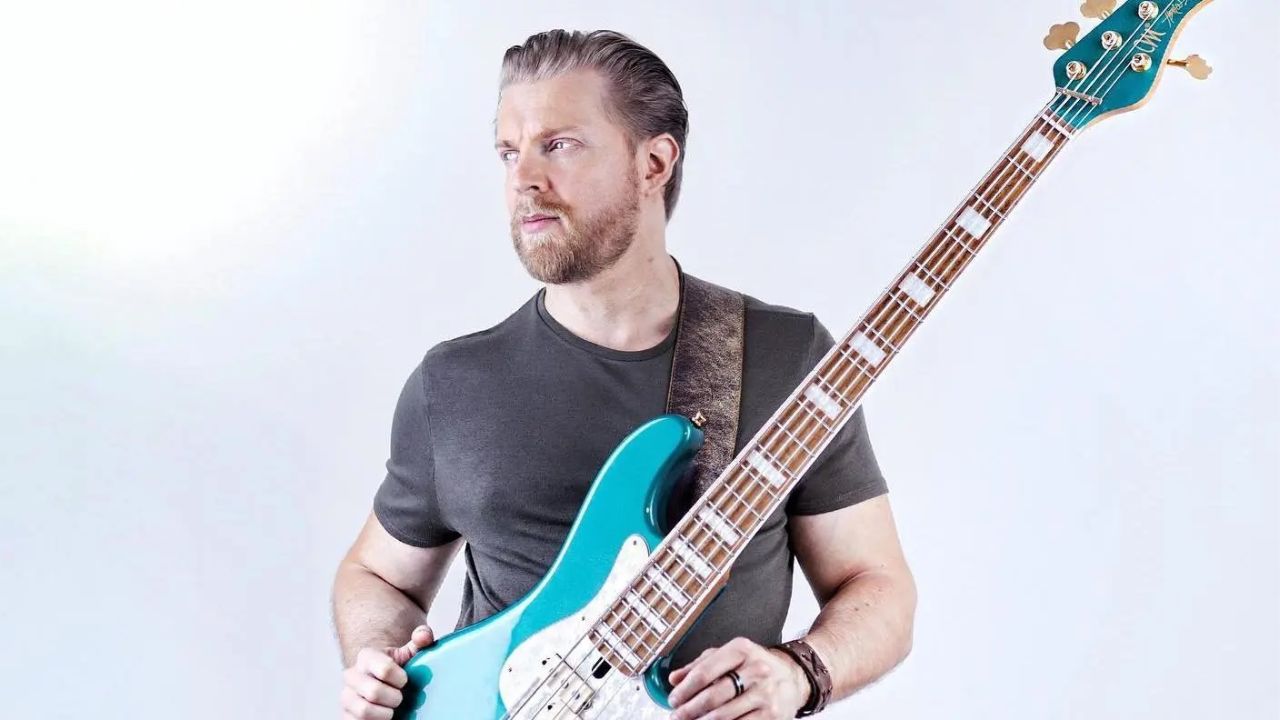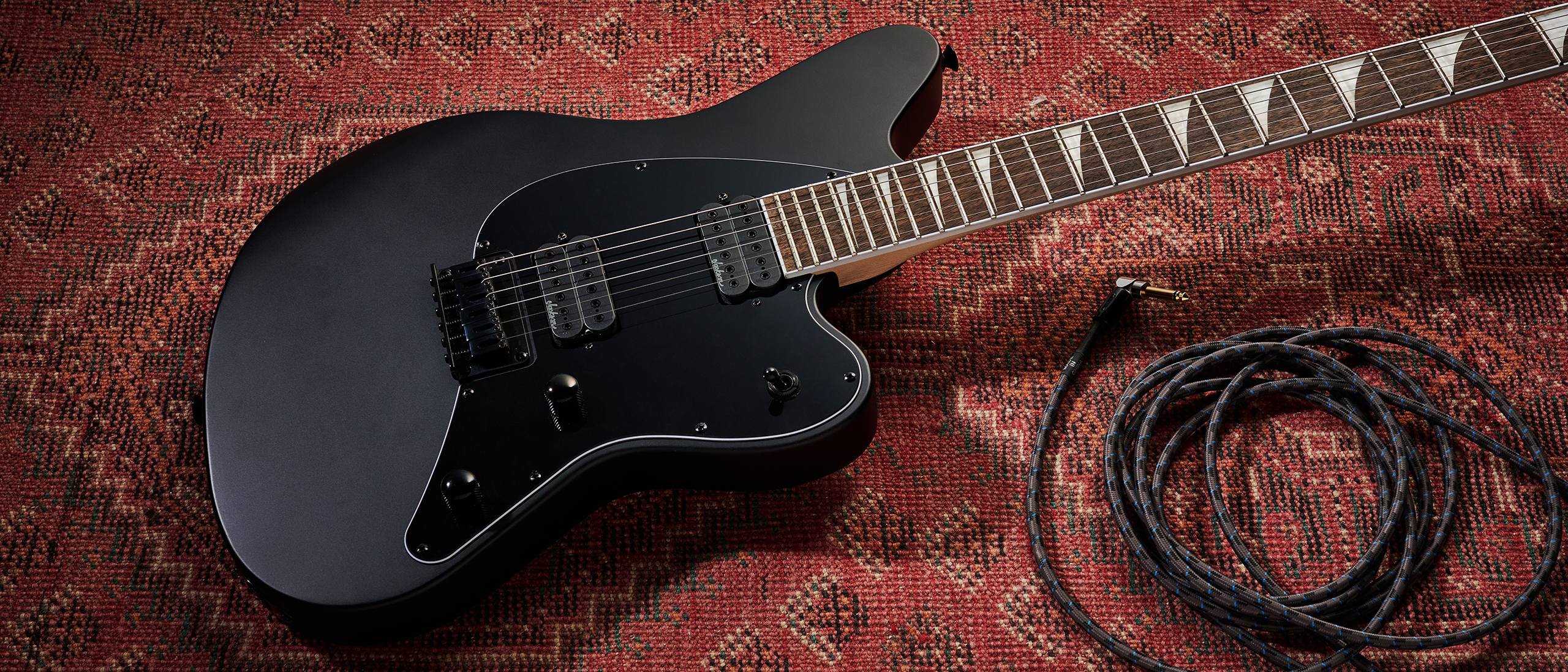Yo La Tengo’s Ira Kaplan: "I’ve tried to challenge myself to solo in different ways, rather than just turn the distortion way up on the Rat, step on it, and go"
The beloved indie trio's guitar-slinger reveals how he's gradually warmed up to plugins, the magic of "old and rickety" DigiTech PDS pedals, and the fan-made drive unit that now occupies pride of place on his pedalboard
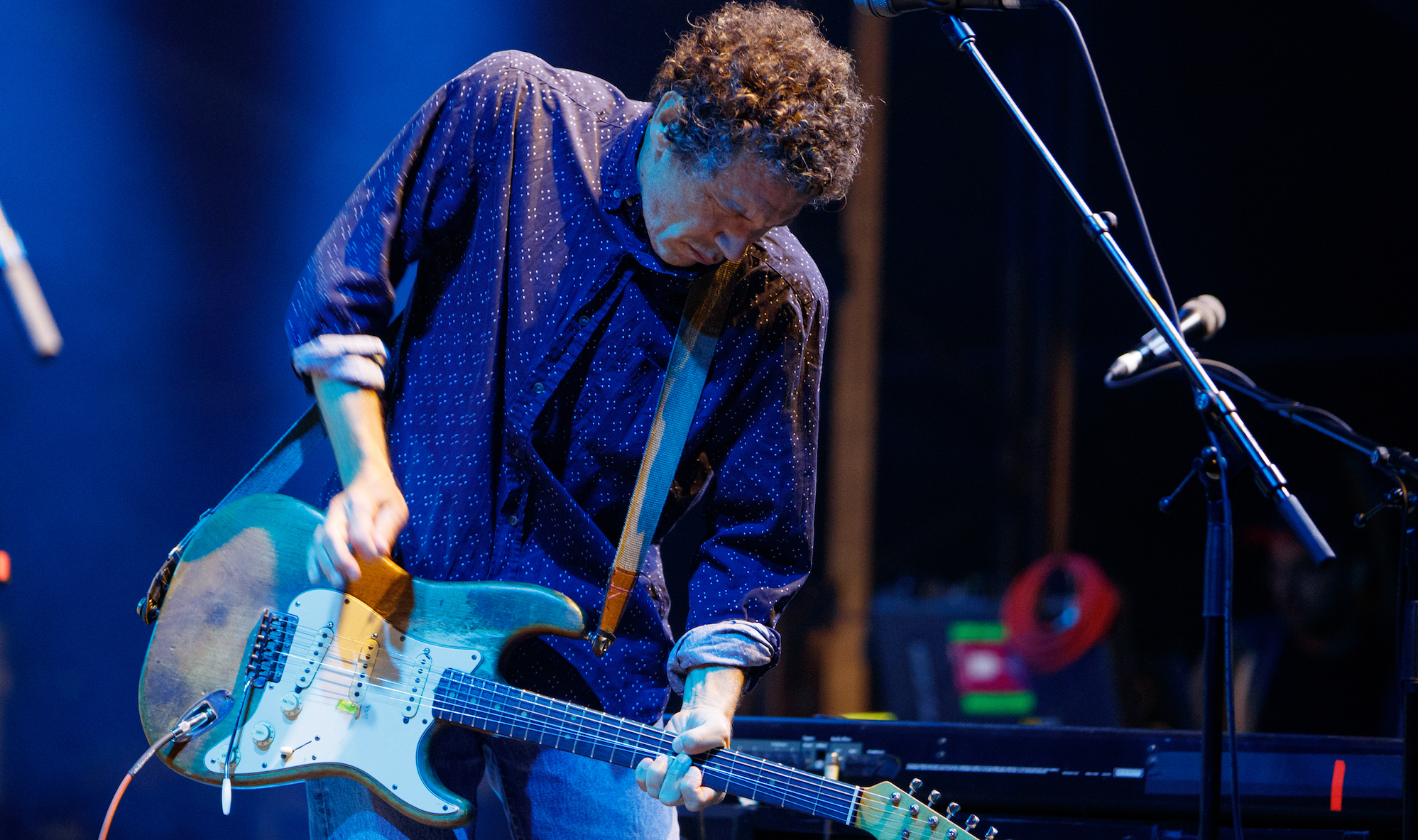
Yo La Tengo’s singer and guitarist, Ira Kaplan, isn’t much for clock-watching. Over the years, he and the rest of the beloved Hoboken, New Jersey trio have often approached live shows with an open-ended looseness, ballooning onstage versions of favorites and rarities from their beloved songbook well beyond the run-times of their studio counterparts.
Last year, though, a series of opening dates for both Japanese Breakfast and Death Cab for Cutie had the jam-centric indie outfit contemplating how to reign things in – a digital clock literally rested near Kaplan’s pedalboard to keep the band begrudgingly on task. It’s perhaps fitting, then, to find Kaplan yearning to “fall out of time” on Fallout, the breezily undulated first single from Yo La Tengo’s wonderfully outsized This Stupid World album.
When asked how this lyric could also potentially apply to how he navigates playing with longtime bandmates Georgia Hubley (drums) and James McNew (bass guitar) – or, conversely, how his wild-waggling lead bends trundle out of sync with the granite-firm groove behind This Stupid World’s Sinatra Drive Breakdown – Kaplan’s pretty zen with his reply.
“I think we enjoy finding the balance between engagement and disengagement,” he concedes, adding of the fluid approach, “I do think there is that kind of floating in and out of awareness and consciousness.”
That’s not to say that the self-produced This Stupid World doesn’t find Kaplan sitting in the pocket with Hubley and McNew – whether he's coursing backmasked solos into bossa nova beats (Until It Happens) or harnessing concentric drones above the huckleberry bump of Tonight’s Episode.
All the same, Kaplan recently caught up with Guitar World to get into 40 years of falling out of time, fan-gifted pedalboard favorites, and the kinds of sounds he spirals into on This Stupid World.
This Stupid World is at times quite a jammy record. How much of this was tracked live off the floor?
Get The Pick Newsletter
All the latest guitar news, interviews, lessons, reviews, deals and more, direct to your inbox!
"You know, I think all of our records are jam records, in that they’re not really planned out. With [2018’s] There’s a Riot Going On, the songs were being written as we were recording them – that sounds pretty jammy to me! [This Stupid World] is maybe more of a classical definition of the term."
How did you treat the recording of This Stupid World compared to 2020’s We Have Amnesia Sometimes, where you basically set up a mic in the middle of your practice space and pressed record?
"We Have Amnesia Sometimes was an accidental record. There was a microphone set up and we were just documenting what we were doing, just to document it. We weren’t thinking we were going to make a record, [or that] anyone was going to even hear [the recordings].
"One day, we thought we should play it for Matador and see if they liked the idea of doing a surprise digital release, and they were enthusiastic enough that they put it out. With This Stupid World, we knew we were making an album. We were approaching it doing multi-track recordings, and overdubs. One was intentional, the other wasn’t."

How long does it usually take for the band to get hot in the studio for something jammy, like [This Stupid World opener] Sinatra Drive Breakdown?
"That’s the one and only time we played it [laughs]. I don’t remember if it was something that preceded when we were focusing on the record or after [we’d started], but it was something we did one day, and we thought, 'Okay, there’s a lot to work with here.' There was a pretty substantial amount of editing that went into turning it into the piece it is now, specifically the guitar line that Georgia and I are singing over at both the beginning and end of the song.
"That originally happened more often [in the arrangement], and in different durations. And some of the guitar solos were mashed together end-to-end, instead of spaced out. If I remember correctly, though, the final length of it is pretty close to what we did originally. It’s not way off from that, but how we get through those seven-or-so minutes changed pretty radically."
The reason for asking is that your lead playing on there – the uncouth bending going on in through the solo sections – makes it sounds as if you’d been hammering at that low, detuned C note hard and heavy for a while.
"It’s possible that the guitar had been in that tuning and we were doing different things with it, but I don’t remember. Georgia does keep a daybook of what we do – if I’d known this was an open book test, I would’ve come here with that book and looked up what we did the day before [laughs]. But then I would have to decipher her notes, which isn’t always easy."
Where would you rank that solo against some of your other wilder leads – like Cherry Chapstick [off 2000’s And Then Nothing Turned Itself Inside-Out], for instance?
"I was very happy with the playing on Sinatra Drive Breakdown. I wouldn't compare it to Cherry Chapstick, because it’s so much less fuzzy. I’ve tried to challenge myself to play solos in different ways, rather than just turn the distortion way up on the Rat, step on it, and go."
What are some of the other ways you’ve been approaching them?
"I use a lot more delay than I used to. You know, sometimes [it’s using a] different exaggerated effect, to see what that’s doing, like using a wah pedal. Just different things rather than all distortion, all the time."
Yo La Tengo famously stretch songs out in a live setting. Since you’ve undertaken a few dates since the release of the album, have any of these songs thrived anew under looser, extended conditions?
"I think so. Last year we did a number of shows opening for Japanese Breakfast and Death Cab for Cutie, and as a result of that we had a specific time [we were allotted] to play. There was a clock planted right next to my pedalboard to make sure we were managing our time correctly. So, I had a pretty good idea of how long our songs were – too good of an idea!
"I really don’t like knowing. Now, we play as long as we want [for headlining shows], so my suspicion is that they’ve gotten a little longer. Someone else would have to confirm that."
With respect to some of the more multi-layered moments on the record, specifically a song like Tonight’s Episode, in a live setting are you leaning more into the acoustic finger work, or the textured drones?
"That’s what we were doing in January – trying out how to present the songs live. Tonight’s Episode is a good choice, [because] that’s the one we’ve moved furthest away [from the studio recording]. I’ve been playing piano on it. I just felt like I was imitating what was on the record, and it didn’t feel [right] coming from me, partly because a lot of that guitar playing on Tonight’s Episode is actually James. Now I’m playing some version of that, but on the piano, with a Wurlitzer sound."
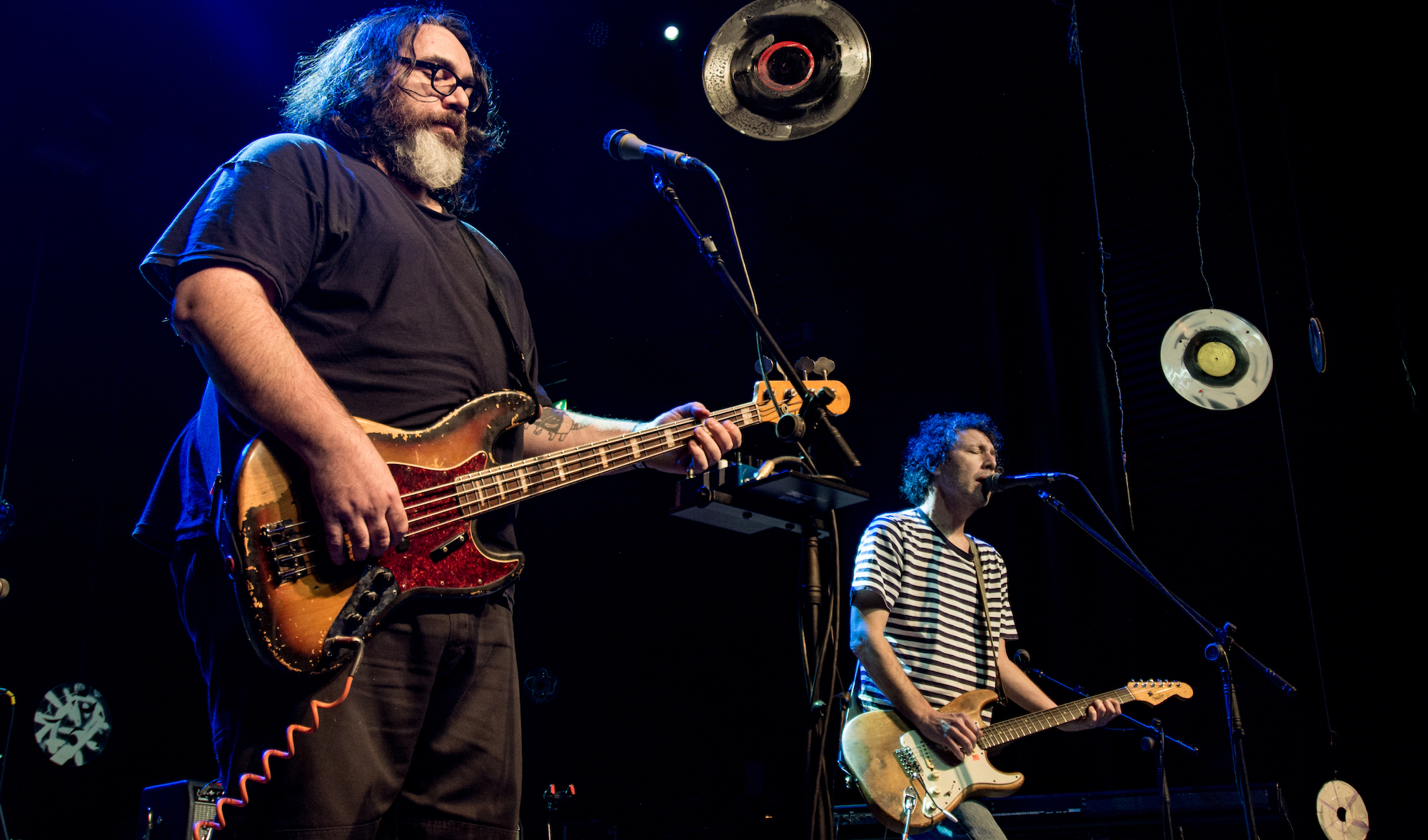
Do you recall what all you used on the record? Was there a ton of gear at the space to choose from?
"We do have a lot of gear at the space, and it’s extremely disorganized, but I might have an idea."
Was there a number one guitar for you, or was it more of a floating situation?
"Definitely floating. I don’t think we noted what guitar I was using on Sinatra Drive Breakdown. When we got to working on it, to play live, we were listening back to [the recording] forensically. I didn’t appear to be using a tremolo bar, so that ruled out the Stratocaster. The Telecaster is a guitar that I’ll play a lot at practice, but it hasn’t been one of my main ones. It’s something I’ll just grab when it's handy.
"We’ve all kind of come to the conclusion that it was the Telecaster. I’m not that systematic, though. Especially at practice."
What kind of tunings are going on throughout this record? The title track is a piece where you’re progressively tuning down.
"There’s one part where it’s getting dramatically detuned, but I think it’s just the one string. That one’s in Open D. I know Miles Away has a new tuning now, but I think that was recorded in standard E."
How thick of an effects sprawl is there on the record?
"The use of plugins is something I really had to warm up to. I would rather use a physical piece of outboard gear in a studio, but James, in particular, was so engaged by the plugins, and it's so easy to change and compare sounds. But a lot of the stuff that we’re doing live is being accomplished differently than on the record.
"We got a specific pedal to play Miles Away on, to imitate something that we did on the computer. A fan gave us a guitar pedal [on the last tour] and I plugged it right in – that’s what we use on Sinatra Drive Breakdown. We definitely didn’t have that when we recorded it."
What kind of a pedal is it?
"It’s some homemade thing. I don’t think it even has a name, so we just call it the 'Philadelphia pedal,' because that’s where we got it. It’s an overdrive.
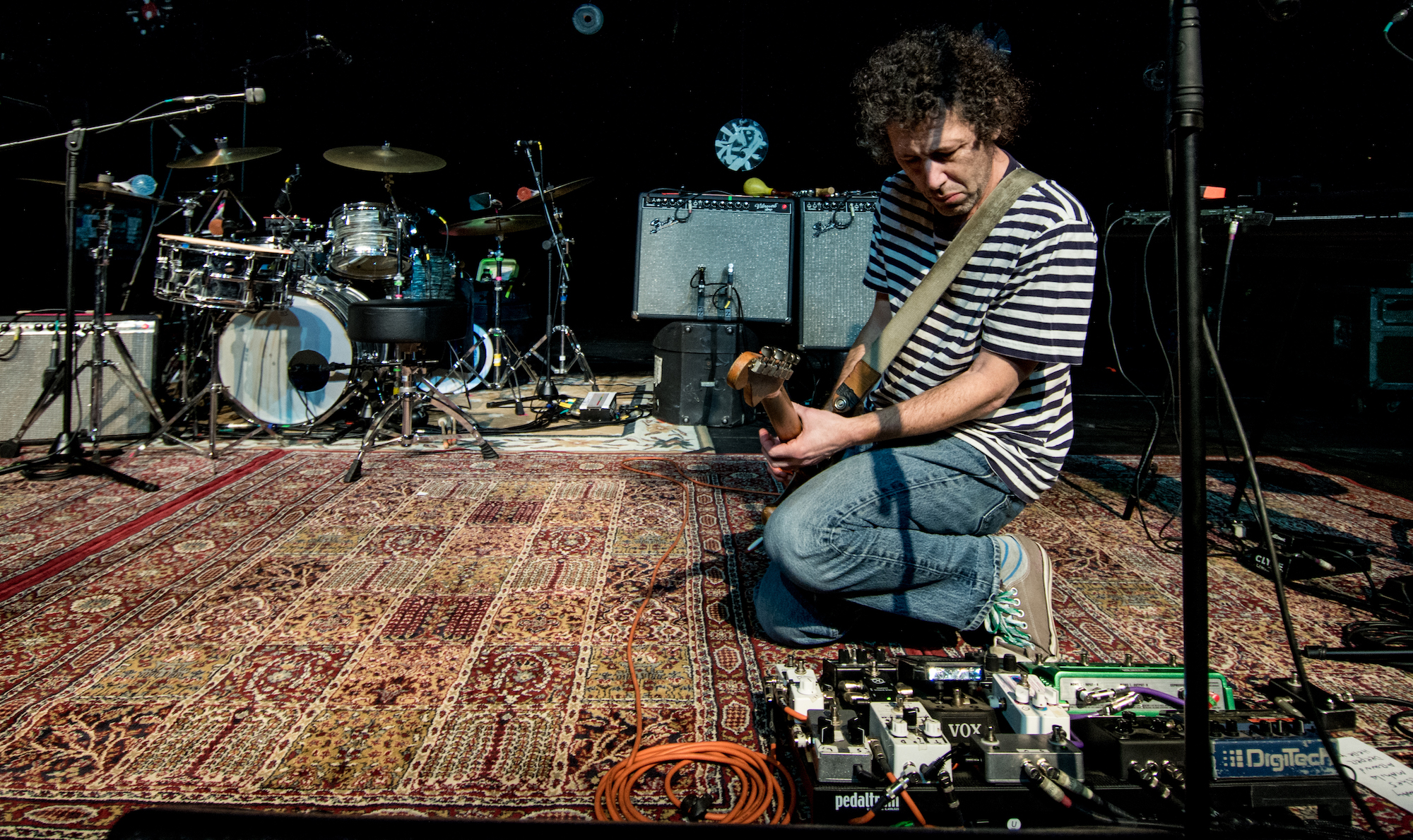
"I enjoy not being that technical. Even though, with this big pedalboard, I couldn’t pretend I’m not in some ways a slave to it – I guess my defence mechanism is to not know very much about ‘em [pedals]. We have tons of stuff, and yet I still keep a couple of Rats on my pedalboard rather than the wealth of boutique pedals we’ve acquired.
"I’m very comfortable with [the Rats], and they seem versatile to me – maybe that’s because I know how they work. But we have this Keeley overdrive that sounds amazing, too.
"We’re also very fond of the DigiTech PDS series – [but] they’re old and rickety and we're in the market for somebody who can maintain them for us, because they need help [laughs]. We can loop on those, which is more of a degraded sound because of the condition the pedals are in… but that can be a very engaging sound to us."
- Yo La Tengo's This Stupid World is available now via Matador Records.
Gregory Adams is a Vancouver-based arts reporter. From metal legends to emerging pop icons to the best of the basement circuit, he’s interviewed musicians across countless genres for nearly two decades, most recently with Guitar World, Bass Player, Revolver, and more – as well as through his independent newsletter, Gut Feeling. This all still blows his mind. He’s a guitar player, generally bouncing hardcore riffs off his ’52 Tele reissue and a dinged-up SG.
“Anyone can dial in a really fat, thick, saturated guitar tone for single notes, but what happens when they palm-mute? Does it just fall apart? A lot of the time it does”: Adam ‘Nolly’ Getgood busts myths about how to get great high-gain tone
“My brother's trying to knock Norm down in price. He's worth $800 million. He goes, ‘I'll give you a bottle of whiskey on top’”: Frank Stallone on the prized vintage Epiphone that Sylvester bought him – and the guitar's mysterious origins




